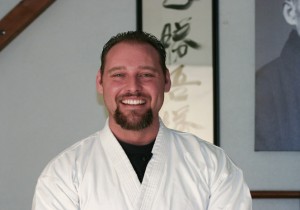 I am always interested in the studies of crime statistics, probabilities and scenarios. Certainly these studies yield important information and can act as prediction indicators of the occurrence of crime but the information they gather, simply put, are generalities. IF such and such is in place, THEN we may assume that x,y,z will follow. Basically, when it comes to crime indicators, I think the if-then scenario concludes the following predictability reliability: Sometimes. When it comes to predicting whether or not a certain person will commit a violent crime one must consider the individual with their ever changing experiences, chemistry and soul status. I am sure that even the most organic of us cannot predict with any certainty what another will do from one moment to the next.
I am always interested in the studies of crime statistics, probabilities and scenarios. Certainly these studies yield important information and can act as prediction indicators of the occurrence of crime but the information they gather, simply put, are generalities. IF such and such is in place, THEN we may assume that x,y,z will follow. Basically, when it comes to crime indicators, I think the if-then scenario concludes the following predictability reliability: Sometimes. When it comes to predicting whether or not a certain person will commit a violent crime one must consider the individual with their ever changing experiences, chemistry and soul status. I am sure that even the most organic of us cannot predict with any certainty what another will do from one moment to the next.
No one is immune from crime. If we were, we wouldn’t need all those statistics, probabilities and studies to predict its occurrence in the first place. Life itself is an “if-then” scenario. If we are in the path of any number of scenarios that manifest into a violent crime, then we must know what to do. Danger is always brewing somewhere.
In terms of safety, we simply are safe until we are not. Sounds simple but it is true. Here’s another if-then scenario to think about. If you learn nothing, then you will know nothing. Although our basic instinct may be to survive in the face of danger, that often is not enough to actually survive. It is not enough to want to survive if you don’t know how.
Logically speaking, there are just too many threatening scenarios to think about preparing for. At the end of the day, we live with so many risks all around us that it just doesn’t make sense to consider them all and wonder which one we will most probably have to deal with. We rely on studies and statistics, to make educated choices about our safety based on our best guess of where we fit into those statistics and that is helpful, however, crime doesn’t always make sense therefore statistics can not be 100% accurate and only so much of our society can be patrolled at once.
Simply put you will never really know what is coming your way until it is happening.
The only thing we can really rely on is ourselves. The best defense to the myriad of risks that ebb and flow around each of our interactions in life is to know where we stand within them. By it’s very nature, violence is not a predictable event. If it were, no one would become a victim, and clearly, there are victims of violent crime every day all day long.
What safety really becomes is another if-then scenario. Simply put, if I am attacked, then I need to know what to do to survive. If I know what to do then it doesn’t really matter if I am attacked. I know how to defend myself so I will. That skill will help me get out of trouble. It is the same way that I approach renting a car at the airport. If I know how to drive, then it really doesn’t matter what make or model they hand me the keys to. If I know how to drive, then I will and increase my chances or arriving safely because I have the basic skill. You cannot always predict which threat in life you will have to deal with, but if you know how to protect yourself, then your chances of survival increase no matter what situation you find yourself in. But only if you have the skills.
We are not born with appropriate self-defends strategies because the nature of threats against us change with the climate of the era. However, it is essential that we do learn to protect ourselves because we never know which situation we will be handed. Without skills, we live a life of chance of which threat we may actually encounter, and common sense tells us that it is not a matter of If, but a matter of when.
~KBC
Mindset Self-Defenese offers workshops, products and a cutting edge magazine dedicated to the self-defense, personal protection and safety of women. Learn more at http://www.mindsetselfdefense.com












